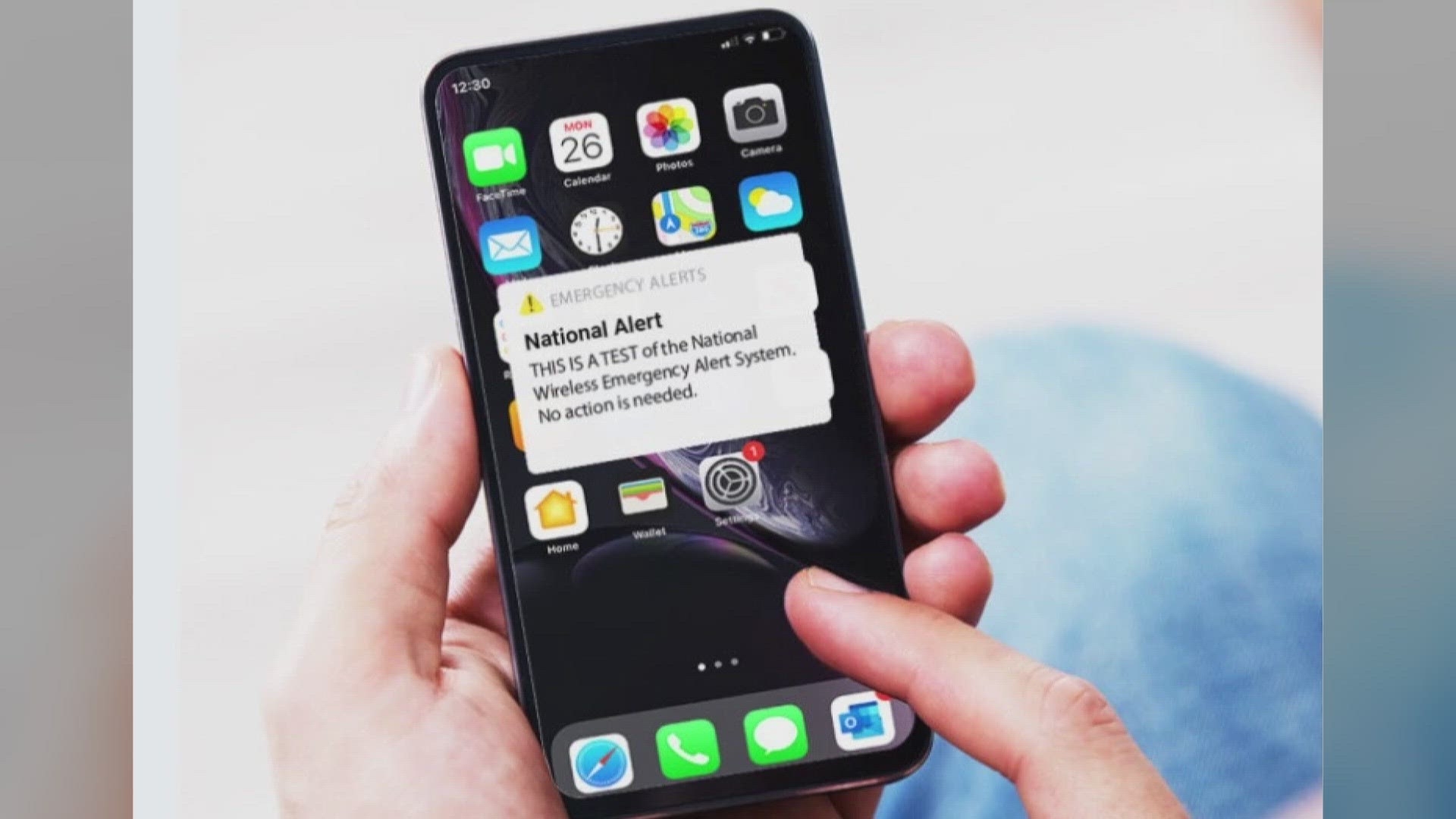WASHINGTON — Around 2:20 p.m. Eastern Time (or a little closer to 2:18 p.m. Eastern) on Wednesday, Oct. 4, millions of cellphones, TVs and radios across the country sent out an alert as part of a nationwide test of the Emergency Alert System.
While it may have been a bit jarring at first, the alerts were only a test - so there's no reason to panic!
The purpose of these tests are to assess the effectiveness of FEMA's Emergency Alert System and Wireless Emergency Alerts. Federal law requires the systems be tested at least once every three years. The last nationwide test was Aug. 11, 2021.
Cellphones should have only received the message once as part of Wednesday's test.
While these types of alerts are frequently used in targeted areas to alert people in the area to thing like tornadoes, Wednesday's test was done across the country.
What time is the emergency alert test?
- The test was slated to start at at 2:20 p.m. Eastern time on Wednesday, although some phones started blaring just a few minutes before that.
- 2:20 p.m. EDT
- 1:20 p.m. CDT
- 12:20 p.m. MDT
- 11:20 a.m. PDT
What did the emergency alert message say on cellphones?
- For consumers, the message that appears on their phones will read: “THIS IS A TEST of the National Wireless Emergency Alert System. No action is needed.”
- Phones with the main menu set to Spanish will display: “ESTA ES UNA PRUEBA del Sistema Nacional de Alerta de Emergencia. No se necesita acción.”


What does the emergency alert sound like? We can't show you or else we'll face a big fine
The FCC has extremely strict rules surrounding emergency alert tones and bans media outlets, like TV stations, from airing the tones outside of an actual emergency.
The reason is that they want to "preserve the unique purpose and effectiveness of the EAS Tones." Basically, the FCC wants people to take notice when they hear those familiar tones and not just tune them out.
Earlier this year, the FCC proposed fining FOX more than half a million dollars after the network used EAS tones during a NFL promo segment.
So while we can't share an example of what the emergency alert sounds like, chances are you've heard it before.
Wednesday's test of the nationwide Emergency Alert System will use the same familiar audio tone that’s been in use since the 1960s to broadcast warnings across the country, according to Jeremy Edwards, a spokesperson for the Federal Emergency Management Agency, which is overseeing the test.
Edwards said the audio signal used for the tests utilizes the same combination of tones familiar to Americans since 1963, when President John F. Kennedy established the original Emergency Broadcast System through an executive order. It’s also the same tone that more than 1,700 local, state, territorial and tribal authorities use to send similar alerts for more localized emergencies.
Did all cellphones get the nationwide test message on Wednesday?
According to the FCC, the vast majority of people will get the WEA test message on their cellphones on Oct. 4. However, phones that are off, in "airplane mode" or not within the coverage area of a cell tower may not get the message.
The agency also noted some older cellphones may not receive alerts and some older devices may not display the alert if a person is on a call.
The Associated Press contributed to this report.

